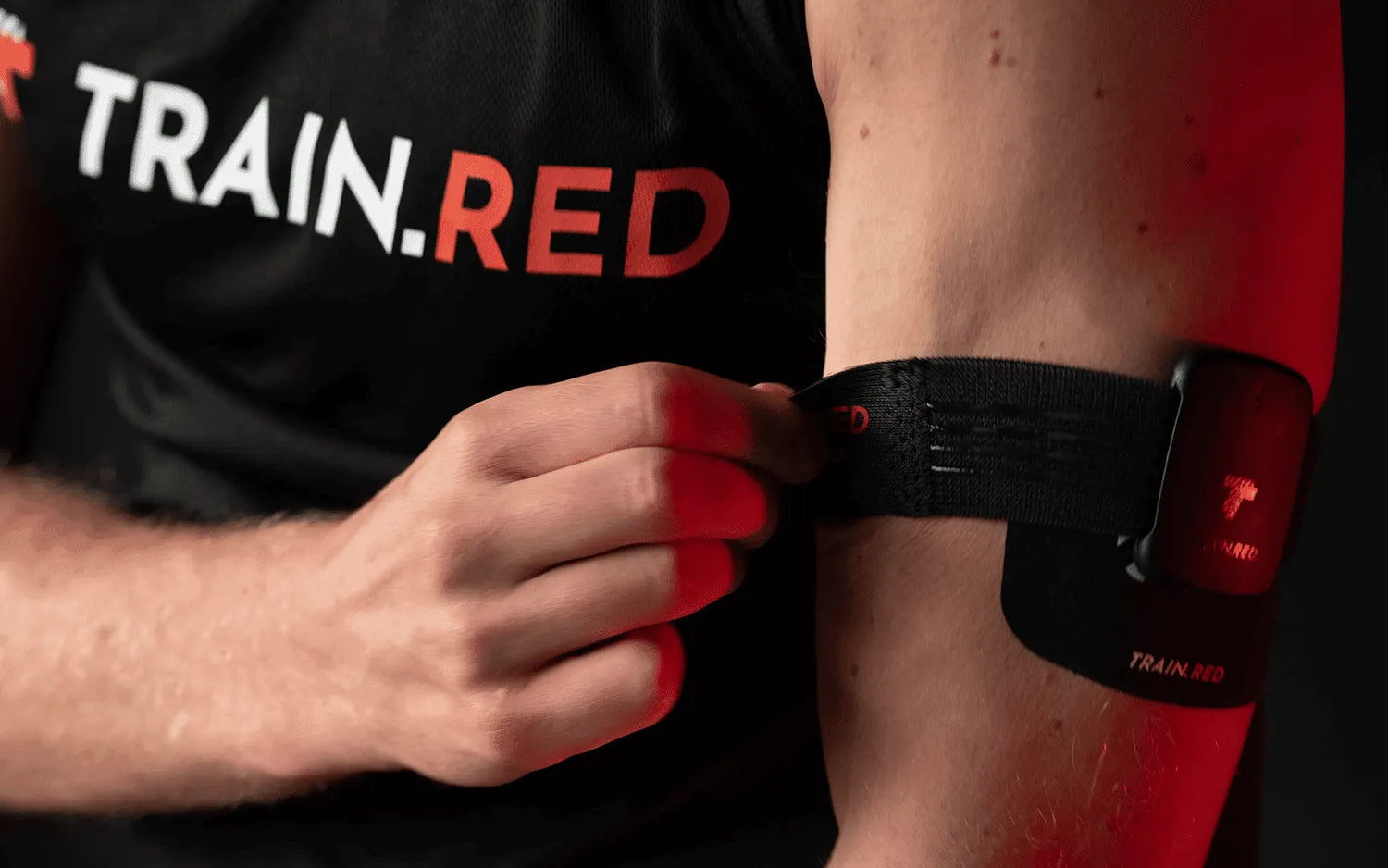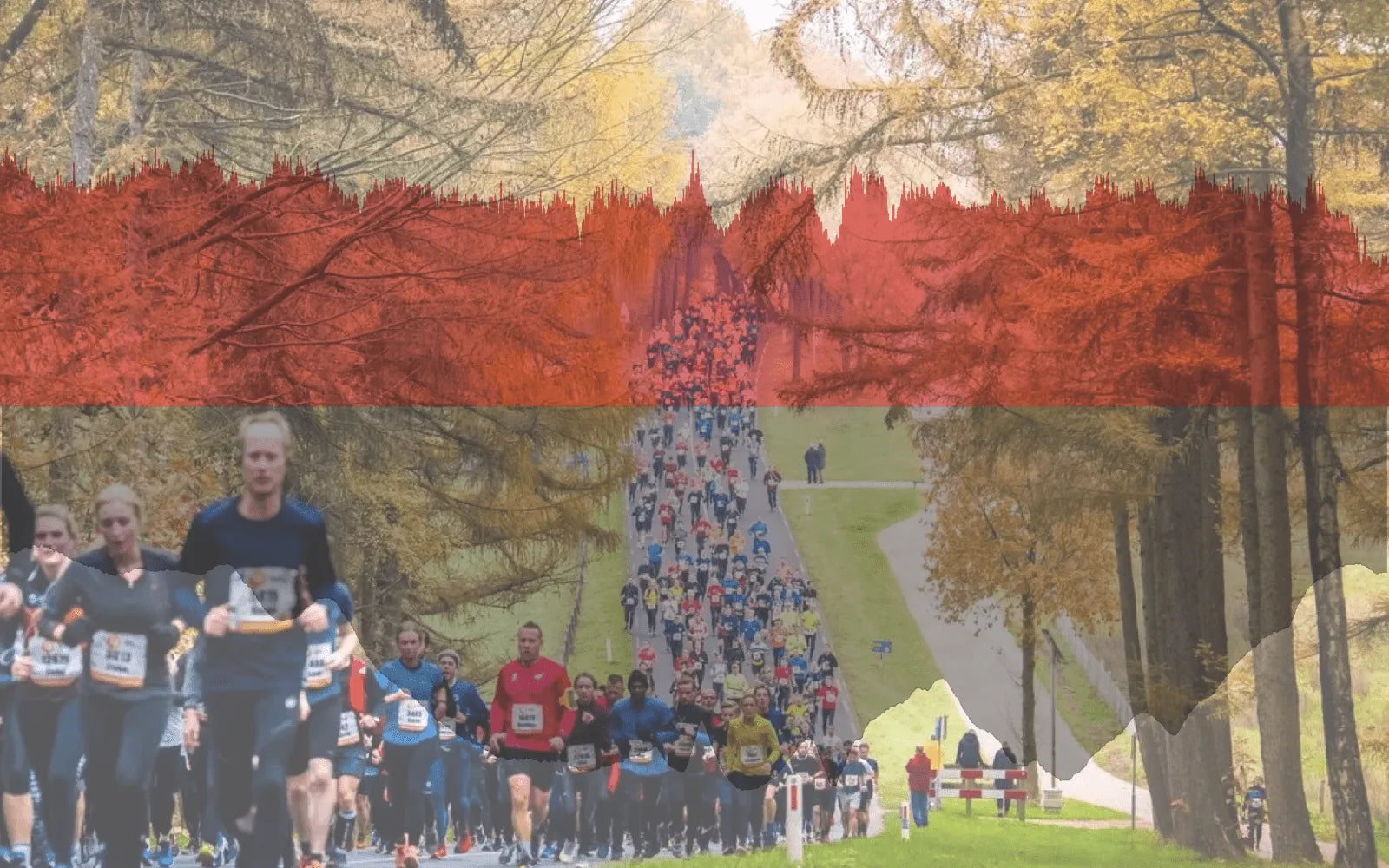It is a sunny, beautiful day to train outside. Time for a quality training session and get some tan on at the same time! Not only your dermatologist will tell you it’s important to protect against sunlight, but so do we.
Protect your muscle oxygen sensor against sunlight
There are a few factors that can affect your data. In this blog, we will focus on InfraRed light, the light Train.Red uses to enlighten your performance. As we mentioned in other blogs, our skin is transparent to infrared light. You can confirm this yourself by shining a flashlight through your skin, and you will be able to see the light from the other side of the finger.
Approximately 54% of the sunlight that reaches the skin is infrared light. Train.Red uses very specific wavelengths and ambient light filters, but a tiny part of this 54% is the exact same signal. This is why sunlight can interfere with your data and should be taken into account before your next training session.
The solution: Train.Red Patch
We have tested our sensors under different conditions and created ways to minimize the interference of sunlight. Have you heard about the Train.Red patch? We created this accessory exactly to assure sunlight does not interfere with the measurement and ensure data quality.
The patch is similar to Kinesio tape but improved with several extra layers of dark woven fabric. You wear the patch directly on your skin, and again similar to Kinesio tape you can actually wear it on your body for multiple days. The marked area on the patch shows where to place the receiver side of the sensor.

Sunlight tests
These are several tests showing the influence of sunlight and the effectiveness of the patch.
Test 1: The sensor was placed on the lower arm, The graph shows a 2-minute measurement continuously repeating blocks of 20 seconds in bright sunlight, and 20 seconds in absence of light. First without the Train.Red patch, and secondly with the patch.


Looking at the results from test 2, the influence of the Train.Red patch is very visible. Without the patch, it is clear to see the change in condition by the stability and a pronounced spike. The data is clearly much noisier when the sensor is directly exposed to sunlight. This is not observed during the test using the Train.Red patch, without any visible spike or noise the conditions change from bright sunlight to absence of sunlight.
Test 2: Again, the sensor was placed on the lower arm, and measurements of 20s were performed while the arm was resting.

We conducted 10 measurements with and without the Train.Red patch. This allows a comparison of the precision. The coefficient of variance (CV) was calculated, which expresses the ratio of the standard deviation to the mean as a percentage (%). Even though, the CV was acceptable without the Train.Red patch (CV<5%), the difference between both conditions is significant. This shows the data varies less when you are using the Train.Red Patch.
Test 3: What we sometimes tend to forget, is that a controlled lab setting does not translate into the real world. In this third test, the first two tests were validated and confirmed by showing how the patch works “on the field”. An easy 5-minute jog with the sensor on the upper leg.

What you expect to see during a 5-minute easy jog, is a stable trace. Expect to observe a small dip of muscle oxygen in the beginning phase of the exercise, this is a result of the increased need for energy and thus oxygen whereas the body is not fully ready yet. As heart rate and blood flow increase, the trace will be very stable and is even likely to gently increase as your muscle tissue is truly warming up. For a healthy subject, it is unlikely to see a pronounced deoxygenation in the muscle during this type of effort.
The data is very different when you are not using the Train.Red patch and in this case, untrustworthy.
In conclusion
If you are used to training with sports leggings or compressive shorts, you will not experience a lot of these issues as they might already be solved. Using dark clothing over the Train.Red sensors will block sunlight and improve your data quality, besides they will also help to stabilize the Train.Red sensor.
So sun’s out, guns out? Yes! Go for it, but make sure to wear your Train.Red FYER, along with your Train.Red Patch and of course sunscreen!



